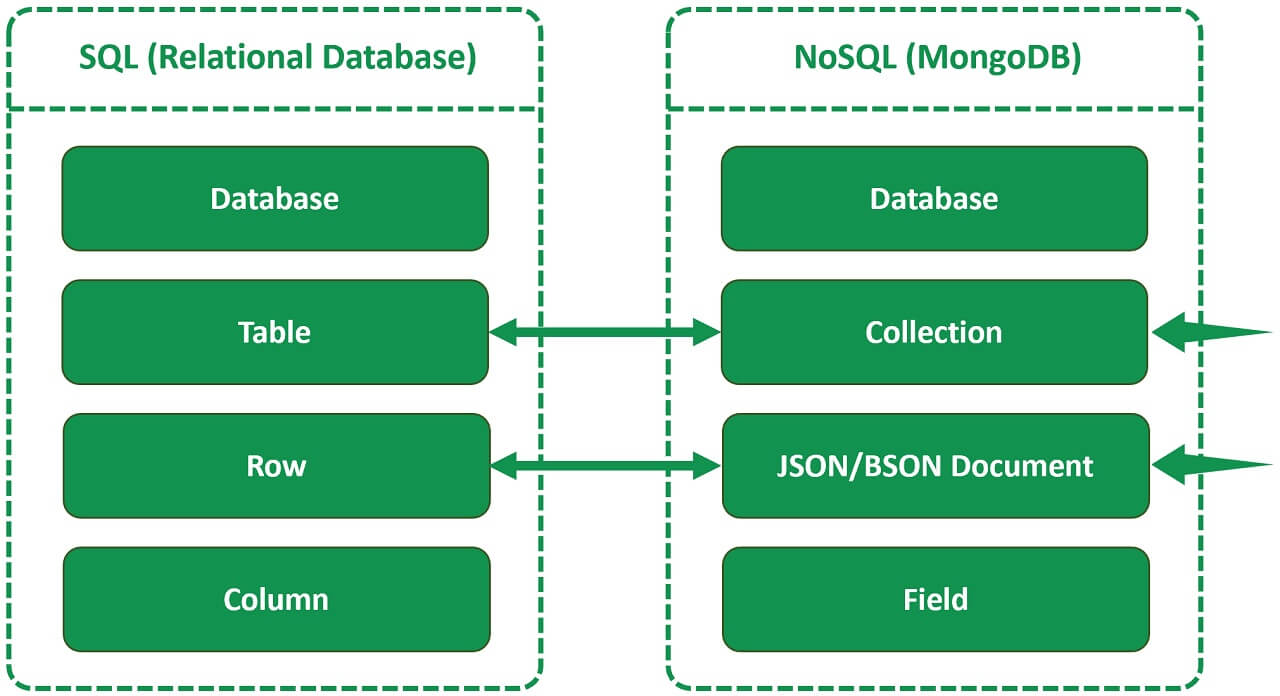An Introductory Guide to Schema Design and Data Organization in Relational and Document-Based Databases
Introduction
Databases are a fundamental component of modern software applications, used for storing, retrieving, and managing data efficiently. There are different types of databases, including relational databases and document-based databases, each with its strengths and weaknesses. In this article, we will explore schema design and data organization in relational and document-based databases, including best practices to consider.

Relational Databases
Relational databases are based on the relational model and use tables with rows and columns to organize and store data. They are highly structured and enforce data integrity through defined relationships between tables and support complex transactions. Common examples of relational databases include MySQL, PostgreSQL, and Oracle.
Schema Design

In relational databases, schema design involves defining tables with columns that represent the attributes of the data, and relationships between tables through keys (e.g., primary keys which are unique identifiers that distinguish one row from another, think of it as an id; and foreign keys which establishes a relationship between two tables by referencing the primary key in another table).
It's important to carefully design the schema to minimize data redundancy and ensure data consistency and integrity. For relational databases, normalization is key to eliminating redundancy and maintaining data consistency. Denormalization can be used strategically for performance optimization, and careful consideration should be given to data modelling techniques and indexing strategies based on the application's requirements. Group related data together using the MECE (Mutually Exclusive and Collectively Exhaustive) principle, which helps in organizing data logically and makes it easier to retrieve and manage data efficiently.
Data Organization
In relational databases, data is organized in tables with rows and columns. Data in related tables are connected through keys, such as primary keys and foreign keys, to establish relationships between tables. Properly organizing data in tables and defining relationships between tables is crucial for efficient data retrieval and management. It's important to carefully plan for the relationships between tables to ensure data consistency and integrity.
Query
In a relational database, you can use SQL to retrieve data from one or more tables using a wide range of features, such as filtering, aggregation, and grouping. Here is an example of a SQL query that retrieves all rows from a table named "employees" where the salary is greater than $50,000:
SELECT * FROM employees WHERE salary > 50000;
In relational databases, data types, indexing, partitioning, and performance optimization techniques play a critical role in optimizing query performance. Proper use of joins, subqueries, and aggregate functions can also greatly impact query performance.
Data Security and Privacy
Ensuring data security is paramount in any database solution. For relational databases, authentication, authorization, encryption, auditing, and backup and recovery strategies should be implemented to protect sensitive data. Additionally, securing communication channels, securing the database server, and regular security audits are important measures to prevent data breaches.
Pros and Cons
Relational databases offer several advantages, including strong data consistency and integrity, support for complex transactions, and a mature ecosystem of tools and technologies. However, they may have limitations in handling unstructured or rapidly changing data and may require more effort in schema design and maintenance.
Document-Based Databases
Document-based databases, also known as NoSQL databases, are based on a document model and use documents to store data. Documents can contain semi-structured or unstructured data, such as JSON or BSON formats. Document-based databases are known for their flexibility and scalability. Common examples of document-based databases include MongoDB, Couchbase, and Cassandra.
Schema Design

In document-based databases, schema design involves defining documents that represent the data entities, and collections that group related documents together. Documents can have varying structures, and schema changes can be made on the fly without affecting existing data. However, it's important to carefully design the schema to avoid data duplication and ensure efficient data retrieval.
Data Organization
In document-based databases, data is organized in collections that contain documents. Collections can be grouped based on related data entities, and documents within a collection can have varying structures. Properly organizing data within documents and collections is crucial for efficient data retrieval and management. Follow the principles of the MECE (Mutually Exclusive and Collectively Exhaustive) principle to group related data together and ensure logical organization.
Query
In document-based databases, querying is typically done using query languages or APIs that allow you to retrieve data based on the structure and content of the documents. For example, in MongoDB, you can use MongoDB Query Language (MQL) or the MongoDB API to perform queries on documents. Document-based databases also support indexing, aggregation, and full-text search to optimize query performance.
Here is an example of a MongoDB query that retrieves all documents from a collection called "orders" where the total amount is greater than $100:
db.orders.find( { total: { $gt: 100 } } );
Notice that the MongoDB query uses a JSON object to define the query criteria, with the $gt operator specifying the condition to be matched.
Additionally, some document-based databases, such as Couchbase, offer SQL support, allowing you to use SQL-like syntax to query your JSON documents. However, the capabilities and syntax supported by these SQL implementations may vary depending on the platform.
Data Security and Privacy

Data security in document-based databases is similar to relational databases, including authentication, authorization, encryption, auditing, and backup and recovery strategies. Additionally, document-based databases offer features such as field-level encryption and fine-grained access controls that allow you to secure sensitive data at a granular level.
Pros and Cons
Document-based databases offer several advantages, including flexibility in handling unstructured or rapidly changing data, scalability, and ease of development. However, they may have limitations in handling complex transactions and joins, and may require careful consideration of data organization to avoid duplication and ensure efficient query performance.
Real-World Use Cases
To illustrate the concepts discussed in this guide, let's look at some real-world examples of schema design, data organization, querying, and data security in relational and document-based databases.
Example 1 - Relational Database:
Suppose you are building an e-commerce platform that requires storing information about customers, orders, and products. In a relational database, you could design a normalized schema where you have separate tables for customers, orders, and products, with primary and foreign key relationships established between them. This would ensure data consistency and eliminate redundancy. You can use indexing, partitioning, and caching techniques to optimize query performance. For example, you can create an index on the order date to speed up order retrieval and use caching to store frequently accessed product data to reduce database load.
Example 2 - Document-Based Database:
Now, let's consider the same e-commerce platform implemented using a document-based database. In this case, you could store customer, order, and product data as separate documents in a collection, where each document represents a complete entity with nested data structures. You can denormalize data by embedding related data, such as customer details in the order document, to reduce the number of queries and improve performance. You can also use indexing and filtering options to efficiently query documents based on specific fields or criteria. For example, you can create an index on the product category field to quickly retrieve products of a particular category.
Example 3 - Data Security
Data security is a critical aspect of any database system, regardless of its type. Implementing robust authentication and authorization mechanisms is essential to control access to the database. In a relational database, you can define user roles, permissions, and privileges to restrict access to certain tables or operations. Encryption can be implemented to protect sensitive data, and backup and recovery strategies can ensure data durability and availability. In a document-based database, you can use access control lists (ACLs) or document-level security features to restrict access to specific documents or fields. Encryption options can also be enabled to protect data at rest and in transit. Additionally, it is important to implement measures to prevent SQL injection through the use of parameterized queries, which helps safeguard against potential security vulnerabilities.
Conclusion
Choosing the right schema design and data organization approach is crucial in designing an efficient and secure database solution. Relational databases are ideal for structured data with complex relationships, while document-based databases are suitable for unstructured or rapidly changing data. Proper use of querying techniques, data security measures, and performance optimization strategies is essential in both types of databases.
In summary, relational databases are well-suited for structured data with complex relationships, while document-based databases are ideal for handling unstructured or rapidly changing data. Proper schema design, data organization, querying, and data security measures are critical for designing efficient and secure databases in both relational and document-based databases. By carefully considering the requirements of your application and following best practices, you can design a robust and scalable database solution that meets your specific needs.